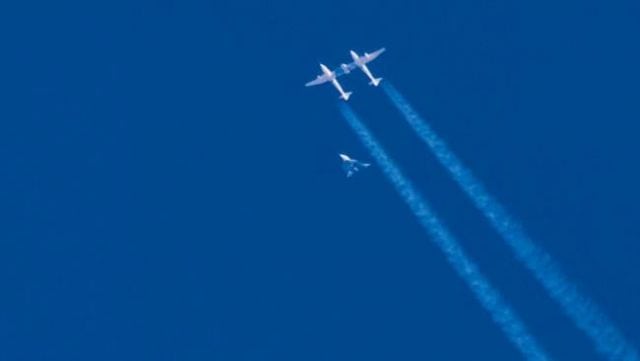
Richard Branson’s Virgin Galactic is gearing up to finally send its tourism rocket ship to the edge of space.
If successful, it would be a major step toward the long-delayed dream of commercial space tourism.
The next test flight could come as early as Thursday with two pilots taking Virgin Space Ship Unity high above California’s Mojave Desert.
CEO George Whitesides said Wednesday they will try to exceed an altitude of 50 miles, which Virgin Galactic considers the boundary of space. Whiteside said that’s the standard used by the U.S. Air Force and other U.S. agencies.
That differs from a long-held view that places the boundary at 62 miles. But Whiteside cited new research that favours the lower altitude and said that as a U.S. company it will use the U.S. standard.
Reaching the threshold of space would demonstrate significant progress toward the start of commercial flights that were promised more than a decade ago. Virgin Galactic’s development of its spaceship took far longer than expected and endured a setback when the first experimental craft broke apart during a 2014 test flight, killing the co-pilot.
“It’s a day that we’ve been waiting for for a long time,” Whitesides said.
More than 600 people have committed up to $250,000 for rides in the six-passenger rocket, which is about the size of an executive jet. They have been waiting years to feel the kick of the rocket’s ignition, a near-vertical high-speed ascent into the blackness of space and several minutes of weightlessness with a view of the Earth far below.
The spaceship isn’t launched from the ground but is carried beneath a special plane to an altitude around 50,000 feet. It then detaches from the plane, ignites its rocket engine and climbs. The rocket is shut down and the craft coasts to the top of its climb — and then begins a descent slowed and stabilized by unique “feathering” technology. The twin tails temporarily rotate upward to increase drag, then return to a normal flying configuration before the craft glides to a landing on a runway.


